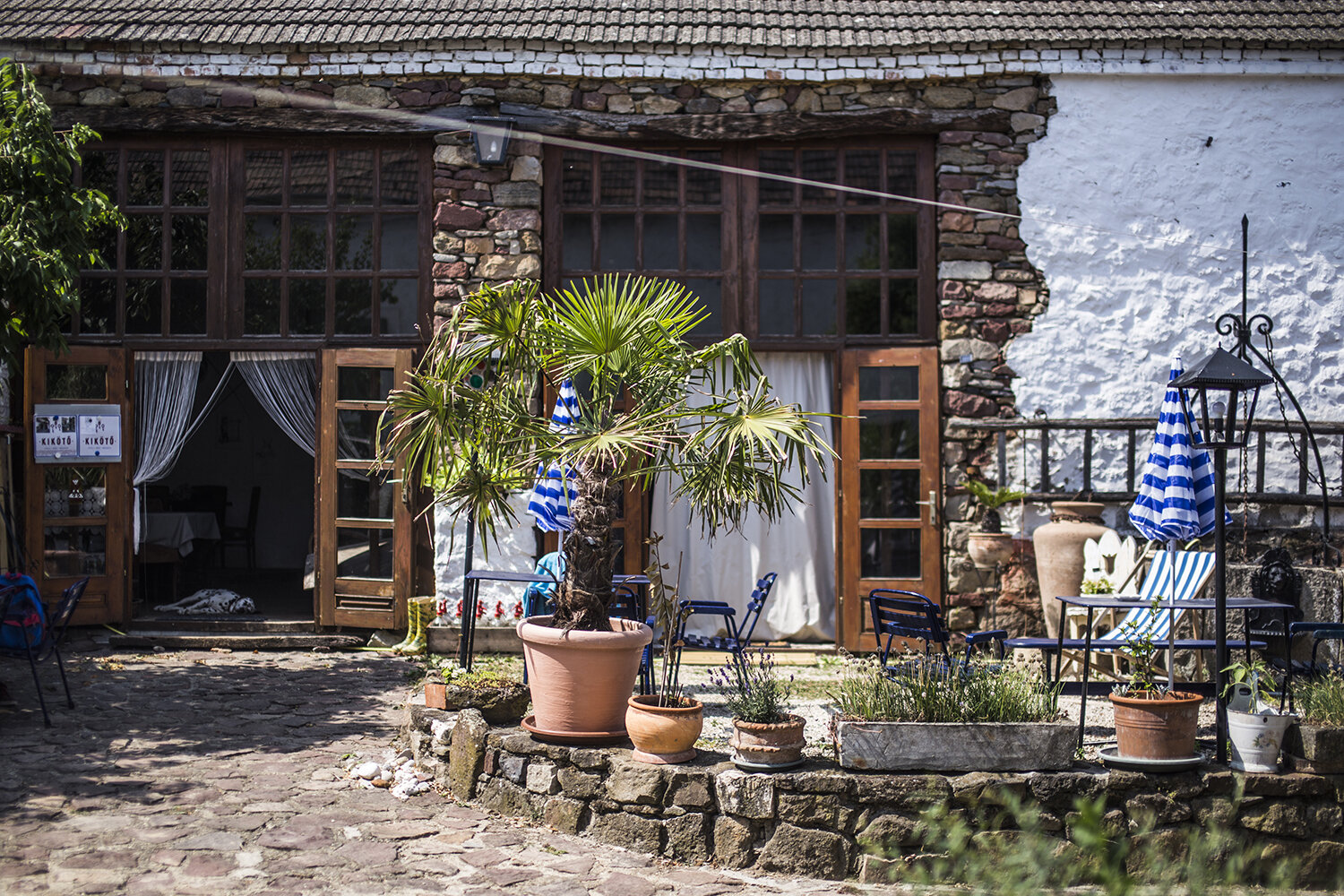Kikötő is located a stone’s throw away from the center of Mindszentkálla, meaning the church and the community space/pub Káli Kapocs. Arriving in charming Jókai Street, we were greeted by a white puli, a blue-striped Dalmatian, which normally has brown patches, but this time got a bit too closely acquainted with a freshly painted chair, and the two owners, of course, who made over an old barn, leaving much of the old building structure intact. The result: the “rooms” are not separated by walls, but long drapery.
Zoltán Hegyi and his wife Brigitta are the kind of people who make things happen. After Hegyi’s band Sexepil, an influential ensemble of the Hungarian underground scene at the time, broke up in 1989, the family moved to the Káli Basin. They opened a restaurant 15 years ago, in an era when local ingredients, green herbs, and slow food were not all the rage. At the same time, they also launched a culture center called Pannon Udvarház (meaning manor house in Hungarian), which hosted performances by such important artists as Tamás Cseh, Muzsikás, Márta Sebestyén, Vujisics, Sziámi, and the band Balaton. The latter was not a particularly profitable venture, so they abandoned it, but they were really missing the company; that’s why they decided a little while ago to open their own hostel.
They converted the barn, which previously housed the restaurant, but didn’t make drastic changes to the structure of the building, leaving all of the beams in place. One of their friends, an architect came up with the idea of using steel cables, and creating a slightly Oriental feel (Zen-inspired, if you will) by suspending a bunch of curtains, which can function as room dividers.
This is no hotel, nor is it a hostel with bunkbeds. The friendly interior is very inviting, but perhaps the biggest asset of the location is the lovely little garden where guests can spend the whole day reading, sunbathing, and drinking fröccs without being disturbed. In addition to other special items on display, visitors can check out Zoli’s helmet collection, which was created with the help of a radio show and lots of enthusiastic donors. “They kept coming to bring helmets, and see the fool. That is me,” Zoli says.




